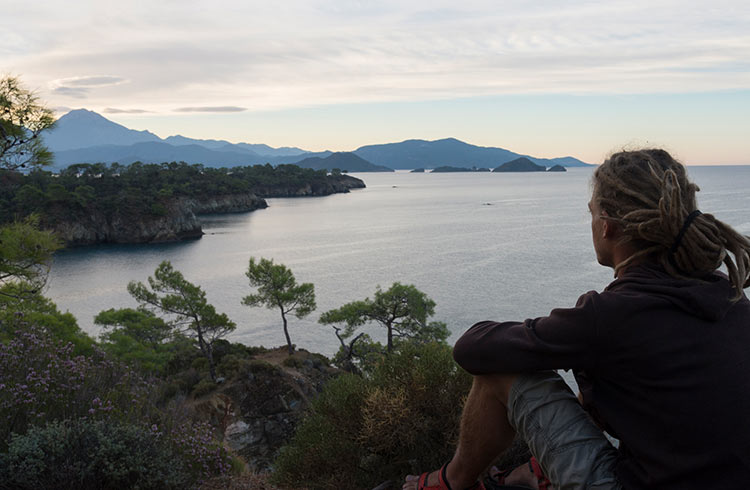What Travelers Need to Know About Deep Vein Thrombosis (DVT)
Sitting for long periods while traveling may put you at risk of DVT. Learn how to recognize the symptoms and prevent this dangerous condition.
 Photo © Getty Images/Jean-Philippe Tournut
Photo © Getty Images/Jean-Philippe Tournut
- What is Deep Vein Thrombosis?
- Symptoms of DVT
- DVT risk factors
- When to seek medical help
- How to prevent DVT when traveling
What is Deep Vein Thrombosis?
Most international travelers are used to sitting in the same position for long periods of time, especially on long-haul flights. While it might be a necessary evil of discovering new places, with long-distance travel comes a risk of Deep Vein Thrombosis (DVT) – commonly known as blood clots.
Much has been written and discussed about DVT being classified as "economy class syndrome". The truth is, anybody regardless of his or her ticket price or destination is at risk. The danger of DVT is that the clot can dislodge from the deep veins of the legs (where they most commonly form) and migrate to the lungs, where it's known as a pulmonary embolism. Pulmonary embolisms are dangerous as they can block vital contact of oxygen and blood, which is potentially fatal.
Symptoms of DVT
Some people don't have any sign or symptoms of DVT but for those who do, the most common signs are:
- Leg swelling, especially in just one leg
- Localized pain in the leg, especially the calf (this can occur for up to a month after the flight)
Symptoms of Pulmonary Embolism
- Chest pain, sudden in onset
- Shortness of breath
- Hemoptysis (coughing up blood)
- Tachycardia (heart rate faster than 100 beats/minute)
The WRIGHT Project, from the World Health Organization, looked specifically at DVT and travel. Conclusions from their study showed the risk of DVT doubles after any type of travel of more than four hours' duration. The absolute risk was found to be 1 in 6,000.
DVT risk factors
- Previous DVT or PE
- History of DVT or PE in a closely related family member
- Oral contraceptive pills or hormone replacement medication
- Pregnancy
- Obesity
- Cancer
- Smoking
- Recent surgery or trauma
- Inherited blood-clotting disorders
- Older age (this factor is controversial)
When flying, driving or riding for extended time, be aware of the risk and take steps to prevent blood clot formation.
When to seek medical help
You should see a doctor if you suspect you may have deep vein thrombosis after a flight. Seek emergency medical assistance immediately if you experience any of the following:
- Respiratory distress such as shortness of breath
- Hemoptysis (coughing up blood)
- Rapid pulse/heartbeat
- Feeling faint/losing consciousness
- Chest pain.
How to prevent DVT when traveling
- Stand up and walk around frequently. The contraction of muscles is especially important for improving blood flow to an area
- Avoid tight-fitting clothing
- Stay hydrated by drinking non-alcoholic drinks frequently
- Do seated exercises
- Choose an aisle or exit row seat where possible, so getting up to move around is easier.
Seated exercises can be done every hour or so, which help use the muscles that are doing nothing while you are seated. Here are some exercises you can try:
1. Foot raises
Keeping your toes on the ground, raise your heels, as high as you can, and lower them. Then keeping your heels on the ground, raise just your toes as high as you can. Repeat this several times.
2. Knee to chest
While seated, hug your left knee to your chest and hold for 10 seconds. Repeat this with your right leg and then do several alternations between the two.
3. Toe circles
Raise your right foot and moving only the tip of your toes, draw a circle clockwise with your foot. Do 10 clockwise, then another 10 counter-clockwise. Repeate with your left foot.
4. Front bends
Keeping your feet planted on the floor while seated, bend forward at the waist and slide your hands from your knees down to your shins and grab your ankles. Hold this position for five seconds and the repeat several times.
5. Neck roll
Roll your head, without moving your shoulders, in a clockwise motion. Complete four to five rotations before stopping and doing several rotations counter clockwise.
6. Hand raises
Raise your right hand over your head, like you are asking a question. Using your left hand, grab your wrist and pull your arm to the left side of your body. Provide gentle resistance with your right hand, for five seconds. Repeat this on the opposite side.
Related articles
Simple and flexible travel insurance
You can buy at home or while traveling, and claim online from anywhere in the world. With 150+ adventure activities covered and 24/7 emergency assistance.
Get a quote

No Comments